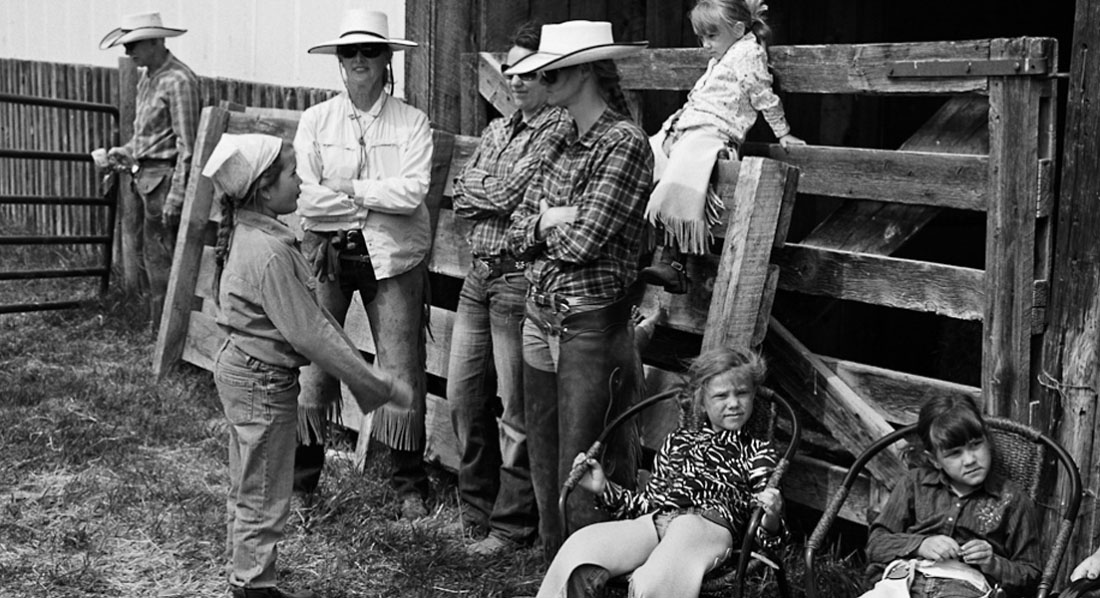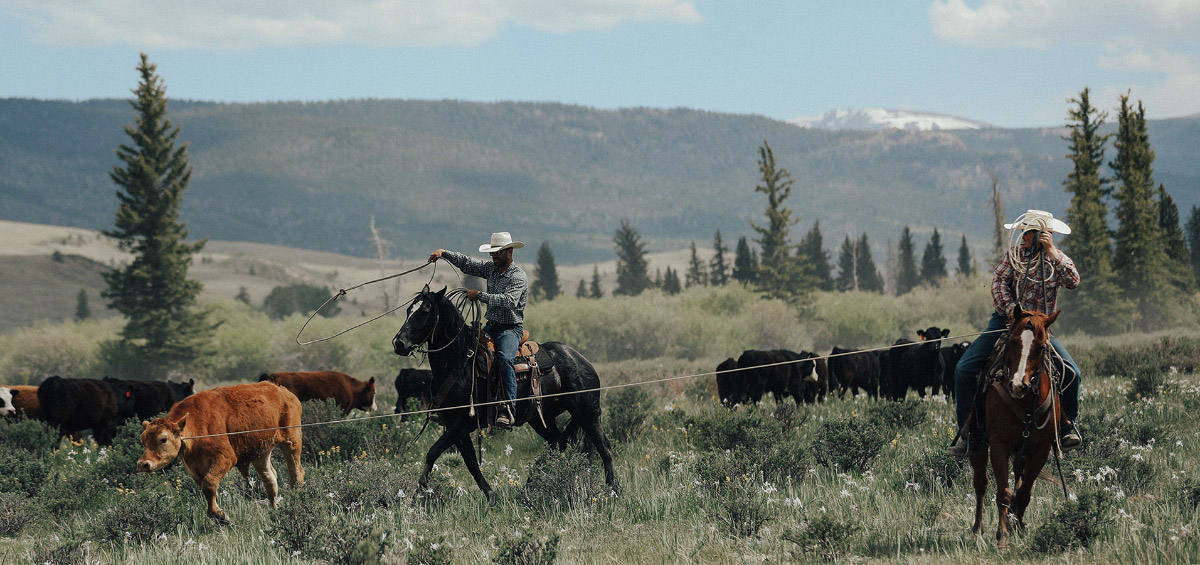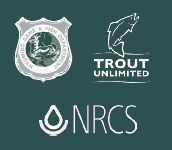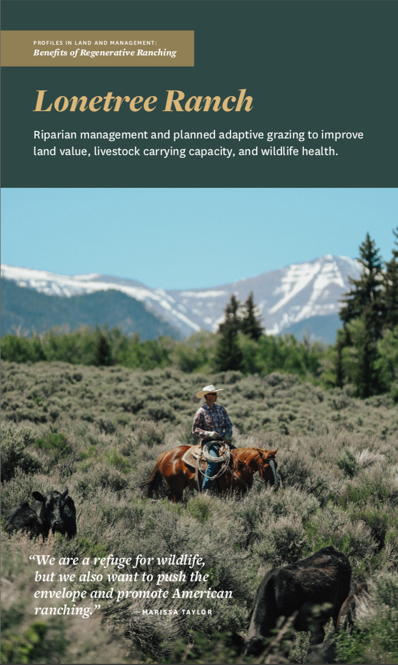“We are a refuge for wildlife, but we also want to push the envelope and promote American ranching.” —MARISSA TAYLOR
Lonetree Ranch is an example of how tradition and innovation can work together to create regenerative success for ranch businesses, families, and ecosystems. Since 2009, the Taylor Family has worked to grow a thriving cattle business and improve the health of their land, watershed, and wildlife by seeking out and testing the most effective land and livestock management strategies they can find. From traditional herding wisdom to modern carbon farming, the Taylors work closely with the land and animals to grow the productivity and resilience of their ranch and business for generations to come.
THE RANCH
In 2009, Robert and Maggie Taylor purchased Lonetree Ranch as part of a lifelong dream to own, operate, and steward a working ranch. Located in the Henry’s Fork River Valley in Uinta County, Wyoming, Lonetree Ranch manages almost 60,000 acres of deeded, public, and state land. The ranch straddles 1.5 miles of the Henry’s Fork River and is home to a wide range of wildlife including pronghorn, moose, elk, sage grouse, mule deer, and a growing native cutthroat trout population. The Taylors recognize that in order to ensure their ranch thrives economically, the ecosystem must be healthy.
REGENERATIVE MANAGEMENT
Today, Lonetree Ranch and its cattle business are managed principally by Robert and Maggie’s daughter, Marissa Taylor, and her husband, Zac Schofield. Described by Marissa as “meshing science and art,” the ranch’s management philosophy is to incorporate the best ideas from their neighbors, technical advisors, and land and business management schools in order to create a plan that suits their unique landscape and goals.
Working closely with their local Natural Resources Conservation Service (NRCS) office, the Taylors developed a detailed conservation plan that identified numerous opportunities to grow the productivity and resilience of the ranch. Cornerstone to their management is livestock grazing that focuses on increasing forage production and healthy soil. Timing grazing to prune and stimulate growing plants and provide sufficient recovery encourages healthy and deep root systems in the plants and increases soil organic matter. Their grazing regime also supports healthy wildlife populations by preventing overgrazing by livestock and leaving sufficient forage in fields frequented by wildlife.
The Taylors have also undertaken numerous projects to improve the health of the watershed. Across the ranch they have worked to repair aging headgates, collaborated with Trout Unlimited to restore riparian habitat, and are changing irrigation management to improve efficiency and reduce prolonged soil saturation that can cause soil compaction.

Highlights
2,000
Head Yearling Herd
Herd Size
Through adaptive planned grazing they’ve grown their seasonal yearling herd from 0 to 500 to 2,000 head per year.
90%
Labor Reduction
Employees
One person and 4 herding dogs can safely move their herds using low-stress animal handling techniques. These practices have reduced labor time in their livestock enterprise by nearly 90% and allowed for more precise and ambitious grazing management.
15X
Yield Increase
Hay Yields
The ranch has seen hay yields increase 15 times in fields switched from flood to pivot irrigation due to increased irrigation effectiveness and reduced soil compaction.

OUTCOMES
The Taylors have begun to see many significant benefits from these regenerative practices. Their care of riparian areas and investment in water infrastructure has improved fish habitat as well as the land’s economic value. These projects have increased the ranch’s recreational appeal and secured valuable beneficial use water rights. Additionally, improvements in irrigation efficiency have allowed them to reduce water use for hay production by nearly 90% while increasing yields.
“My goal here, one of my dreams, is to make this a sustainable cattle operation and also a sustainable lifestyle for my children and their children.” —ROBERT TAYLOR
Mastering low-stress stockmanship and incorporating gentle herding dogs for moving their livestock has significantly cut labor time and allowed the Taylors to effectively and economically execute their adaptive grazing plan. Through the plan, they have been able to increase both forage utilization and production as well as the size of their seasonal yearling herd. Further, their abundant forage supports wildlife on the ranch, including displaced moose that are occasionally relocated to the ranch as part of a partnership with the Wyoming Game and Fish Department. Last, the improved forage and management have allowed the Taylors to begin grass-finishing cattle on the ranch to sell directly to consumers as organic grass-finished beef.
Looking to the future, the Taylors hope to continue using grazing to improve their soil and overall ecosystem health and to support the growing network of regenerative ranchers and consumers. ■

The Profiles in Land and Management Series features the work of innovative ranchers and land managers who are achieving economic and ecological benefits on working lands.
This project is supported by the McKnight Foundation, the NoRegrets Initiative, and TomKat Ranch. And by the hardworking agencies, land managers, and ranchers that generously shared their stories and time.


